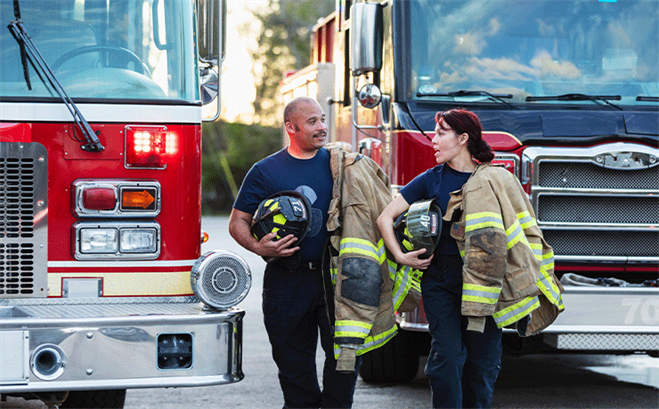Fire Prevention Week: Stopping Fires Before They Start
September 29, 2025 by Kate Nadolski

The History of National Fire Prevention Week
In 1925, President Calvin Coolidge declared Fire Prevention Week a national observance in to commemorate the Great Chicago Fire of 1871. This fire killed more than 250 people and left 100,000 individuals homeless. Fire Prevention Week is observed each year during the week of October 9, which is the anniversary of the Great Chicago Fire.
The Need for Continued Fire Awareness and Education
Many fire departments recognize Fire Prevention Week through public education. After all, understanding what causes most residential fires is crucial to preventing fire emergencies. In addition, these educational efforts also help the public understand how to stay safe in the event of a fire emergency.
According to the National Fire Protection Association (NFPA), the overall estimate for total fire incidents in 2023 was 54% lower than in 1980. This decrease can be attributed to the intentional focus placed on fire education and prevention.
While fire prevention and safety efforts have progressed significantly, initiatives to further protect life and property continue. In 2023, the NFPA recorded an estimated 1.39 million fires in the United States, causing 3,670 civilian fire-related deaths and more than 13,000 fire-related civilian injuries.
NFPA’s 2025 Safety and Prevention Focus
Each year the NFPA selects a focus area for its safety and prevention efforts. This year the spotlight is on the dangers of lithium-ion batteries. The U.S. Consumer Product Safety Commission reports that between 2016 and 2022, more than 25,000 fire and overheating incidents occurred as a direct result of lithium-ion batteries.
While lithium-ion batteries are generally safe, the level of risk depends on any defects within the battery or damage sustained. There are many ways damage can occur such as improper use, insufficient storage methods, unsafe charging practices, and physical impacts that compromise the battery’s structure.
Smart Safety Tips for Lithium-Ion Batteries
Explore the following safety tips from the NFPA to help reduce the risk of a fire:
1.) Only purchase certified battery products
Ensure any product using a lithium-ion battery meets safety standards with a certification mark visible on the product such as UL, ETL, or CSA.
2.) Follow standard practices for charging devices
When charging a device, use the designated cord that came with the item and follow any specific instructions provided by the manufacturer. Charge the device on a hard surface and away from flammable areas. Once the device is fully charged, unplug it or remove the battery.
3.) Dispose of lithium-ion batteries properly
Never throw lithium-ion batteries in waste bins or standard recycling bins, as this presents a fire risk. Locate a safe battery recycling location for proper disposal. The NFPA recommends visiting call2recycle.com to find a safe drop-off location nearby.